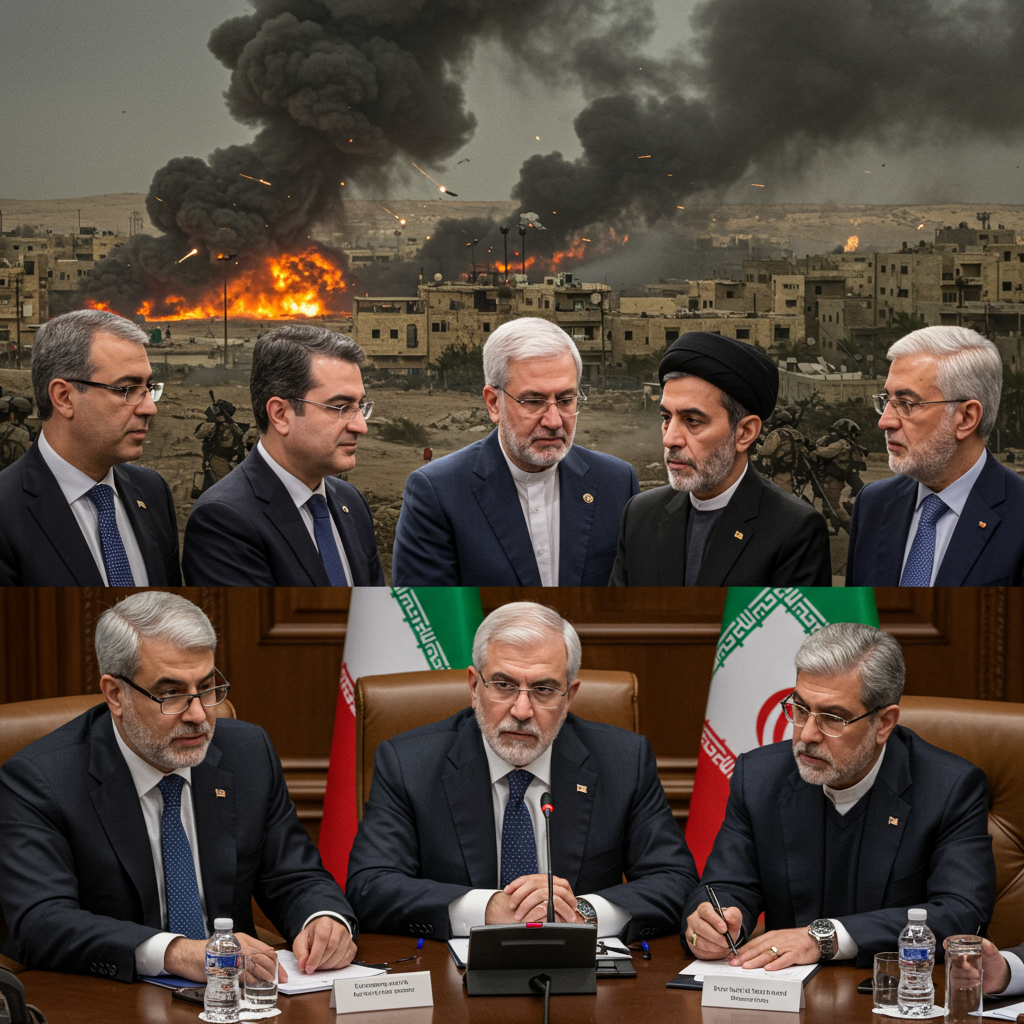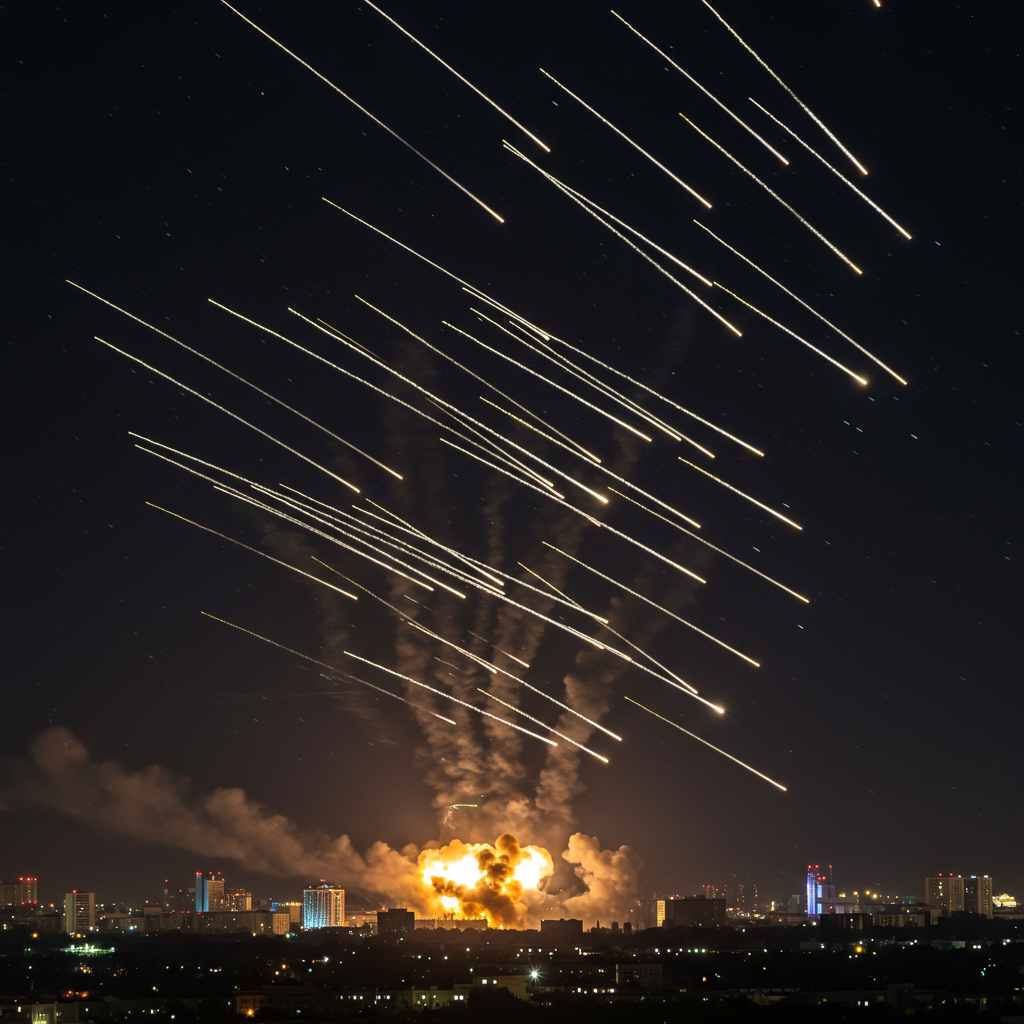New satellite images provide striking visual evidence of extensive damage at multiple Iranian nuclear facilities following recent coordinated strikes by the United States and Israel. The imagery, primarily captured by Maxar Technologies on June 24, offers a clearer picture of the impact on key sites that the US and Israel say were targeted to prevent Tehran from acquiring nuclear weapons. Iran consistently maintains its nuclear program is solely for peaceful purposes and denies seeking atomic weapons.
The attacks, which included a major US operation codenamed “Midnight Hammer” employing powerful bunker-buster munitions and cruise missiles, targeted critical infrastructure across three main sites: Fordo, Natanz, and Isfahan.
Damage at the Fortified Fordo Facility
The Fordo Fuel Enrichment Plant, a deeply buried facility located within a mountainside near the city of Qom, sustained significant damage. Hit first by US bunker-buster bombs on June 22, which left six large craters and scattered debris, the site was reportedly struck again by Israel on June 23, specifically targeting access routes.
High-resolution satellite images from June 24 reveal fresh damage not visible immediately after the initial US strikes. New craters are clearly visible on access roads leading to tunnel entrances in the north-west, southern edge, and western edge of the complex. An installation north of the facility also appears destroyed alongside earlier craters and grey dust.
Experts analyzing the images suggest the volume of grey dust and evidence of concrete expulsion imply substantial blast damage, potentially extending to underground structures. Trevor Lawrence, head of the Centre for Energetics Technology, Cranfield University, noted that detonations powerful enough to expel concrete could cause significant internal damage. The complexity of these deeply buried structures means such damage would likely take years to repair, if repair is possible at all.
Impacts at the Isfahan Nuclear Technology Centre
Iran’s largest nuclear research complex, the Isfahan Nuclear Technology Centre, which includes a uranium conversion facility, also suffered extensive damage. Struck multiple times by Israel and then heavily by the US on June 22, satellite images show widespread destruction across numerous buildings.
A structure previously identified as the main uranium conversion building by the Institute for Science and International Security (ISIS) appears mostly destroyed in the latest imagery. Damage is also evident at tunnel entrances located north of the complex.
Intelligence analysis firm Maiar assessed the damage to these tunnel entrances as “moderate” structural damage, noting scorching. However, experts debated the severity; Mark Cancian from the Centre for Strategic and International Studies suggested one entrance might show signs of an internal explosion and fire, potentially requiring years to repair, while another appeared mainly covered with dirt, potentially clearable in weeks. Iran’s reported prior efforts to reinforce entrances with earth may have reduced the attacks’ effectiveness.
Natanz Craters Covered
Natanz, Iran’s primary uranium enrichment facility, also targeted by both countries, initially showed two visible craters above suspected underground centrifuge halls following the US strikes on June 22.
However, subsequent images from June 24 show these craters have been covered with dirt. This suggests work may be underway to mitigate damage or potentially to shield the area against further penetrating strikes, according to experts like David Albright from ISIS.
Debate Over Overall Program Impact
While the satellite images confirm significant damage to infrastructure, experts remain divided on the overall impact on Iran’s nuclear program. US officials have claimed the strikes were “spectacularly successful” and devastated Iran’s nuclear ambitions.
However, independent experts, including Jeffrey Lewis and David Albright, offer a more cautious assessment. They acknowledge significant damage to facilities and infrastructure but emphasize that the program is far from “obliterated.” A key concern highlighted by these experts is the apparent failure to target or destroy Iran’s existing stocks of highly enriched uranium.
Experts point to satellite images taken in the days before the strikes, showing trucks near entrances to underground facilities at Isfahan and Fordo, suggesting potential pre-strike activity like preparing for sealing or the possible removal of materials. This raises concerns that Iran may have moved its valuable uranium stocks to unknown locations ahead of the anticipated attacks.
According to assessments, Iran possesses over 400 kilograms of 60% enriched uranium, an amount sufficient for approximately 10 nuclear bombs after further enrichment to weapons-grade levels. This material was not targeted by the strikes and could potentially be used in the future. Furthermore, Iran may still possess thousands of centrifuges not yet installed at its facilities, representing a residual capability.
Ultimately, experts suggest that while the strikes have delivered a severe setback to Iran’s enrichment infrastructure, military action alone may not permanently halt the program. Achieving that goal likely requires rigorous international inspections and diplomatic agreements.
Damage Beyond Nuclear Sites
Satellite images also revealed damage at non-nuclear locations. Mehrabad airport in Tehran, a target of Israeli strikes, shows damage to structures in an adjacent industrial area linked to Iran’s defence industry and a destroyed warehouse.
Similarly, Shahid Rajaee University in north-eastern Tehran sustained extensive damage to multiple large buildings near the campus, correlating with verified reports of strikes in the Lavizan district, an area potentially linked to Iran’s nuclear activities.
The visual evidence from satellite images clearly demonstrates the physical toll of the recent strikes on Iran’s key nuclear and related sites, sparking ongoing debate about the true extent of the damage and the future trajectory of Iran’s nuclear capabilities.




